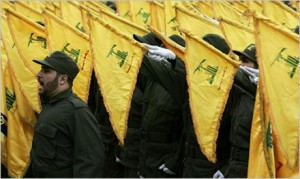 Syrian state forces backed by the Lebanese militant group Hezbollah hammered the central city of Homs on Friday, activists said, sparking concern from United Nations officials over thousands of civilians trapped in the city.
Syrian state forces backed by the Lebanese militant group Hezbollah hammered the central city of Homs on Friday, activists said, sparking concern from United Nations officials over thousands of civilians trapped in the city.
President Bashar al-Assad’s forces have been using heavy air raids and artillery strikes to push their offensive around the capital and the strategically located Homs, which spans central Syria’s eastern and western international borders.
Syria’s opposition also hit deadlock on Friday in talks in Istanbul to elect a new leader, as the toppling of Egypt’s Muslim Brotherhood dealt a blow to its most influential faction.
The stalemate is preventing the main players in the Syrian National Coalition from reaching a deal acceptable to their Saudi and Qatari backers, who want to strengthen the opposition to counter an onslaught by Assad’s forces.
Sources in the Arab- and Western-backed coalition said the fate of an agreement hinges on the Syrian Muslim Brotherhood, the only organized group in the opposition, which holds a balance of votes between a Saudi-backed and a Qatari-backed candidate.
But the group is reeling from this week’s political blow its mother branch in Egypt, where the armed forces intervened to topple Islamist President Mohamed Mursi after street protests.
“The atmosphere is subdued. The Brotherhood in Egypt, and by extension in Syria and elsewhere, took a blow, but even their opponents feel that the Middle East lost a historic opportunity to convince Islamists to embrace democracy,” a coalition official said in Istanbul, where the opposition is meeting.
Near Damascus, a well-known activist who went by the name Mohammed Moaz died of injuries from shelling in a rebel-held suburb on Friday.
Moaz, whose real name was Fedaa al-Baali, was one of the first activists to let himself be filmed and recorded to try to give more credibility to his reports. He had suffered previous injuries while filming rebel operations around the capital.
Syria’s war has killed more than 100,000 people, the pro-opposition Syrian Observatory for Human Rights says. The two-year revolt began as peaceful protests but, under a fierce security force crackdown, degenerated into civil war.
Homs city was the epicenter of the insurgency, and is the focal point of a new push by Assad’s forces.
Assad is trying to cement control of a belt of territory between his seat of power in Damascus and his stronghold on Syria’s Mediterranean coast, a move which could sever the north and south of the country where rebels have a foothold.
Video uploaded by activist groups in Homs showed fires blazing from destroyed buildings and grey smoke rolling down streets torn up by the clashes. Fighters fired rocket-propelled grenades and machineguns from battered apartment blocks.
The United Nations Office of the High Commissioner for Human Rights said it was “extremely concerned” about the offensive, launched by Assad’s forces on June 28.
“The number of civilians currently trapped due to the heavy fighting in and around Homs is believed to be between 2,500 and 4,000 people,” chief spokesman Rupert Colville said.
“We call upon all parties to respect their obligations under international law, avoid civilian casualties and allow trapped civilians to leave without fear of persecution or violence.”
Some opposition sources reported small advances for Assad’s forces, but others said the street-by-street battles meant the overall balance of power was unchanged after more than a week.
CASTLE UNDER SIEGE
Outside the city, Assad’s forces fired on the nearby town of al-Hosn, a hillside rebel stronghold famous for its ancient crusader fortress, the Crac des Chevaliers. Rebels have been holed up for months in the massive castle, once a perfectly preserved UNESCO World Heritage site.
Residents nearby said pro-Assad militias set fire to the forests surrounding the town, hoping to destroy potential cover for fighters trying to bring in supplies.
According to residents, pro-Assad militias and Hezbollah operatives are leading the fight around Homs, which is likely to deepen the already deadly sectarian tensions in the area.
Syria’s Sunni Muslim population has led the revolt, while minorities have generally stood behind Assad-fearing Islamist groups that have joined the rebels. Assad himself is from the minority Alawite sect, an offshoot of Shi’ite Islam.
The intervention of Hezbollah, a Shi’ite group funded by Iran, has intensified regional Sunni-Shi’ite tensions already running high due to the growing participation of Sunni radical militants with the opposition.
Many have warned that the fall of Homs city would give Assad de facto control of central Syria and are urging rebels from other parts of the country to send arms and reinforcements.
But some rebels inside the city expressed confidence that rebel strongholds north of Homs would provide enough cover to prevent a total loss of control. That could mean months more of a bloody stalemate that has already leveled much of Homs, as well as other historic cities like northern Aleppo.
“We have been preparing for the regime to do this for months, and we have a plan ready when the time is right,” said one rebel inside Homs’s besieged Old City.
“Homs will not fall. Victory for either side right now though, that also seems unlikely.”
Reuters
Leave a Reply
You must be logged in to post a comment.